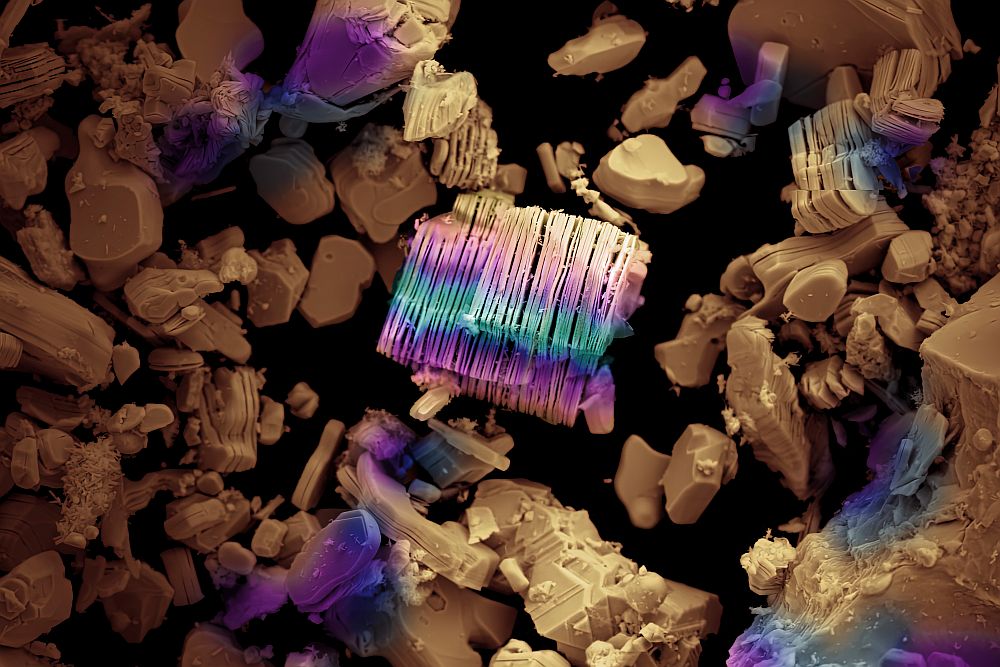[Image above] Pickled electrolyte molecules (PF2OSiMe3) binding to reaction centers on the cathode surface. For the ball-and-stick molecules attached to cathode surface, olive green indicates phosphorus (P); purple, fluorine (F); red, oxygen (O); and structure above oxygen, SiMe3. Credit: Argonne National Laboratory/Juan C. Garcia
There’s no shortage of research when it comes to studying lithium-ion batteries. In fact, here on Ceramic Tech Today, we’ve reported on an extraordinary number of research scientists working on lithium batteries.
But researchers still face challenges in developing longer lasting and higher performing batteries. One of those challenges is increasing the energy storage capacity of lithium batteries—a critical issue to overcome if electric vehicles are going to eventually replace gas-powered vehicles someday.
Researchers at the U.S. Department of Energy’s Argonne National Laboratory recently discovered that a chemical reaction that takes place when a performance-enhancing additive is mixed into a lithium battery’s electrolyte can suppress its decomposition. This discovery could lead to higher performing lithium-ion batteries.
One common challenge for lithium-ion batteries lies in the high-voltage cathode materials that are used to increase energy storage capacity. They cause electrolyte degradation during the battery’s charge and discharge cycle over time. The researchers solve this by using the additive trimethylsilyl phosphite (TMSPi), which “modifies the cathode surface by forming a protective layer that stalls the electrolyte decomposition,” according to an Argonne National Laboratory news release.
What the scientists observed was that it wasn’t the TMSPi that protected the cathode—it was a chemical derivative—PF2OSiMe3—that slowly formed when salt in the electrolyte reacted with the TMSPi. The scientists recognized that the chemical process was similar to cucumbers fermenting in brine, or the same chemical process that goes into making dill pickles.
According to senior materials scientist Daniel Abraham, this process decreases the electrical resistance that typically happens during a battery’s charge-discharge cycling and allows for quicker charges and discharges. The PF2OSiMe3 also reduces transition metal loss that occurs in the cathode as well as the parasitic oxidation currents during prolonged cell cycling, according to the team’s paper.
“Battery performance actually improves as the TMPSi electrolyte additive ages,” Abraham explains in the release. “Key to success in this study was the identification of the origin of these beneficial effects.”
The researchers are hopeful that they can continue to improve upon their discovery.
“Now that we better understand the mechanism for the cathode-protective action by the phosphite,” Abraham adds, “we can be more systematic in finding new ways of achieving and improving this pickling of the electrolyte additive.”
The paper, published in The Journal of Physical Chemistry, is “Chemical “Pickling” of Phosphite Additives Mitigates Impedance Rise in Li Ion Batteries” (DOI: 10.1021/acs.jpcc.8b02056).
Want to read more articles like this? Subscribe to the Ceramic Tech Today newsletter to continue to receive the latest news in the ceramic and glass industry right in your inbox! Visit this link to get started.
Author
Faye Oney
CTT Categories
- Basic Science
- Energy
- Market Insights
- Material Innovations


